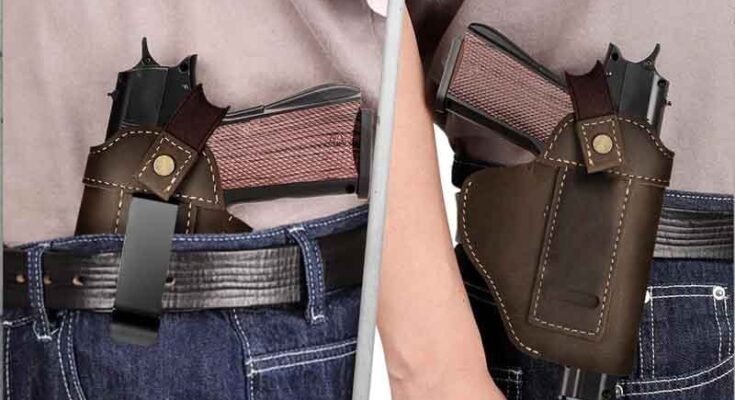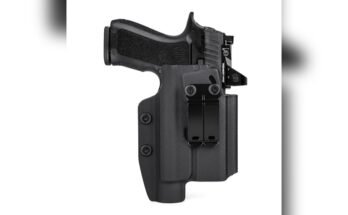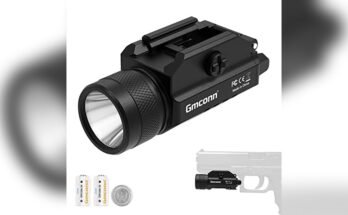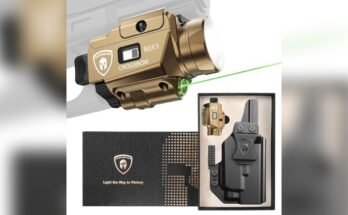If you ask me what is the best holster for open carry, I’ll start with this: the best holster is the one that balances retention, speed, comfort, and legal compliance for your daily reality. I’ve carried openly on ranges, on private land, and during training blocks with instructors who test gear to its limits. In this guide, I’ll share what works, what fails, and how to choose a setup that keeps your firearm secure and your draw smooth. Let’s get you set up right.
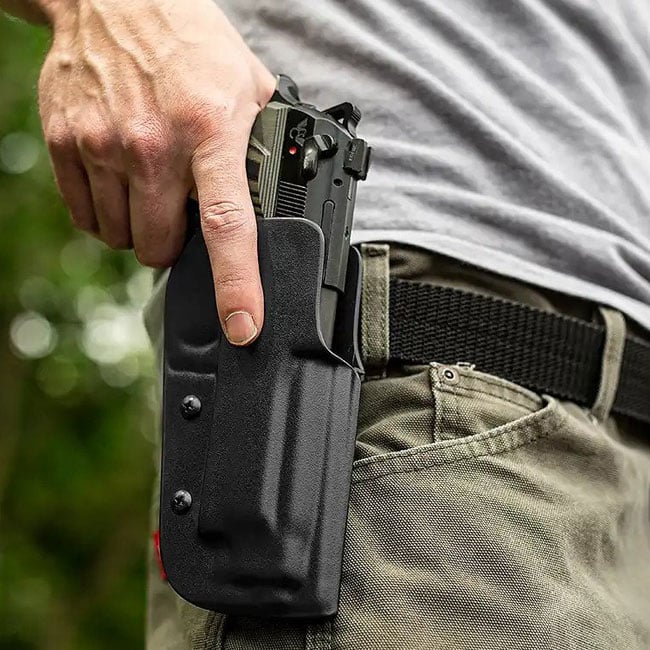
Source: tacticalgear.com
How To Define “Best” For Open Carry
“Best” depends on context. You need a holster that fits your gun, your body, and your environment. Open carry raises visibility, so retention and safety take center stage.
Here’s the framework I use:
- Security: True retention (Level II or Level III) that locks the gun until you choose to draw.
- Speed: Clean, consistent draw with minimal snag points.
- Comfort: Stable ride height and cant with zero flop on your belt.
- Durability: Weather-resistant materials and secure mounting.
- Compliance: Meets your local laws and your organization’s policy.
In most cases, a duty-grade OWB holster with active retention offers the safest, most reliable open carry solution. For casual open carry in low-risk settings, a well-tuned kydex OWB with strong passive retention may work, but it demands disciplined situational awareness and training.
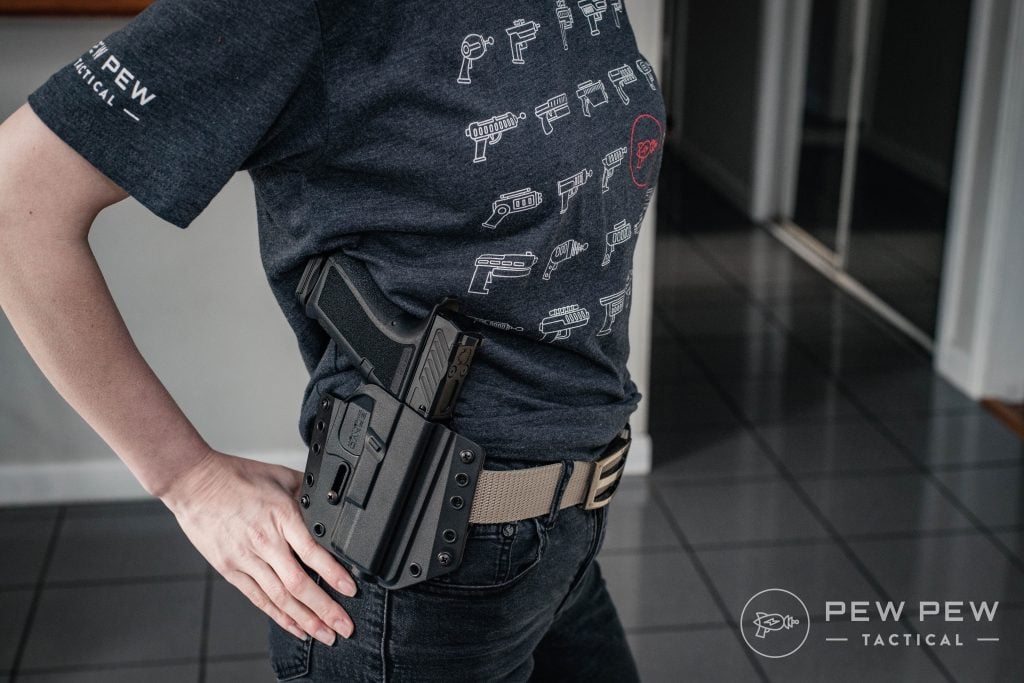
Source: www.pewpewtactical.com
Key Features That Matter Most
Material
- Kydex: Rigid, consistent, weatherproof, fast. My default for open carry outside of uniform duty.
- Polymer duty blends: Rugged and proven on patrol; often heavier but highly secure.
- Leather: Comfortable and classic, but retention and weather performance vary.
Retention Levels
- Passive friction: Good for range or low-threat environments with proper training.
- Level II: One active device (e.g., thumb release) plus molded retention. Strong all-around pick.
- Level III: Two devices. Ideal for duty, crowded areas, and higher-risk contexts.
Mounting And Platform
- Belt-mounted OWB: Best blend of stability, access, and concealment-optional.
- Mid-ride duty UBL or similar: Lowers the grip slightly for a cleaner draw.
- Drop attachments: Useful with body armor; less discrete for daily wear.
Fit And Compatibility
- Light-bearing: Ensure your holster fits your weapon light model.
- Optics-ready: Holster must clear RDS and co-witness sights.
- Muzzle length: Holster length should match or slightly exceed barrel length to reduce tipping.
Ergonomics
- Ride height and cant: Set for a neutral wrist angle and fast acquisition.
- Guard profile: Enough coverage to shield the trigger, controls, and optic without blocking your draw.

Source: www.falcoholsters.com
Top Holster Types For Open Carry
Duty-Grade Retention OWB
- Best for: Public spaces, professional use, training with close contact, higher-risk settings.
- Why: Active retention helps prevent gun grabs while keeping draw times fast with practice.
Kydex OWB With Passive Retention
- Best for: Range days, private property, rural carry with low population density.
- Why: Lightweight and quick, but you must manage distance and awareness.
Chest And Field Rigs
- Best for: Backcountry, ATV, or hunting; keeps gun off backpack belt lines.
- Why: Clear of waist gear, but not ideal for urban open carry.
Universal Or Light-Fit Holsters
- Best for: Multi-gun users with similar light and slide footprints.
- Why: Convenience over perfect fit; verify retention and draw smoothness before use.

Source: www.incognitoconcealment.com
Best Picks By Scenario: My Tested Recommendations
Everyday Open Carry In Public
- Pick: A Level II retention OWB duty holster with a mid-ride mount.
- Why: Balances retention and speed. I’ve used thumb-release systems that lock solid yet draw fast under stress.
Duty/Professional Use
- Pick: Level II or Level III duty holster with ALS/SLS-style systems and a stiff duty belt.
- Why: Proven in force-on-force. Strong ejection-port lock and hood keep the gun in your control.
Rural And Range Days
- Pick: Kydex OWB with robust passive retention and a curved belt loop for stability.
- Why: Lighter and cooler. I use light-bearing shells to keep my setup consistent across guns.
Backcountry And Overlanding
- Pick: Chest holster that clears pack straps and waders.
- Why: Keeps your firearm accessible even with layers or hip belts.
Budget-Conscious Setup
- Pick: Quality kydex OWB with adjustable retention and a strong belt. If you open carry in public often, save up for a Level II upgrade.
- Why: Training plus a solid belt often matters more than brand prestige.
Pro tip from experience: don’t cheap out on the belt. A rigid 1.5–2.0 inch belt eliminates flop, keeps the holster angle consistent, and cuts your draw time more than you’d expect.
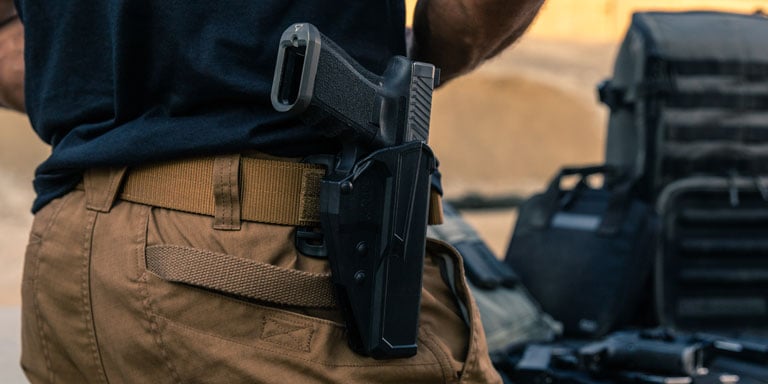
Source: tacticalgear.com
Set Up Your Holster For Success
Dial In Retention
- Aim for a snap-in feel with no rattle. Press down and tug up; the gun should not budge without the proper release motion.
Choose Ride Height And Cant
- Lower mid-ride with slight forward cant works for most people. Test with dry-fire reps and timer drills.
Mount Securely
- Use factory screws with thread locker. Re-check torque after the first week of wear.
Match Your Accessories
- If you run a weapon light or optic, choose a holster made for that exact setup. Mixing parts leads to binding and slow draws.
Training, Safety, And Real-World Lessons
What I’ve learned through force-on-force and range work:
- Retention saves guns: I’ve seen passive-only holsters fail when someone crowds you or you trip. Level II gave me time and control.
- Practice your defeat motion: Run 50–100 draws to burn in muscle memory on the release. Then add movement and cover garments.
- Manage the bubble: Open carry invites attention. Keep a step of space, mind your angles, and avoid tight crowds when possible.
- Test under stress: Do timed draws, lateral steps, and verbal commands. A holster that feels great at home can stumble on the clock.
Maintenance habits that matter:
- Wipe dust and grit from the locking surfaces weekly.
- Inspect screws and spacers monthly.
- Check optic and light screws; a loose light can lock up a holster channel.
Legal And Ethical Considerations
Know Your Laws
- Some states and localities restrict open carry or require specific retention standards.
- Private property rules vary; respect posted policies and requests from owners or staff.
Be A Good Ambassador
- Keep your firearm clean and secure. Avoid handling in public. Use a holster that fully covers the trigger.
- Dress and act in a way that reduces alarm. Professional conduct reflects on all responsible owners.
Document And Train
- Keep proof of training and policy compliance if you carry in a professional capacity.
- If you modify your holster or gun, test reliability and document the setup.
Frequently Asked Questions Of What Is The Best Holster For Open Carry?
Is A Level II Holster Necessary For Open Carry?
For most public open carry, yes. Level II adds an active lock that resists grabs and bumps while staying fast with practice. In low-risk, private settings, quality passive kydex can suffice, but it demands strong awareness and training.
What Belt Should I Use For An OWB Open Carry Holster?
Use a rigid 1.5–2.0 inch belt designed for carry or duty. A stiff belt reduces holster flop, improves concealment if needed, and speeds your draw by keeping the grip in a repeatable position.
Can I Open Carry With A Weapon Light And Optic?
Yes, but your holster must be built for your exact light and optic profile. Look for optic-cut channels and light-specific shells. Test for smooth insertion, clean release, and no binding.
How Do I Set The Right Retention?
With the gun holstered, turn the holster upside down over a soft surface and gently shake. The gun should stay put until you use the intended release. Adjust screws or retention devices to reach that point.
What’s Better: Kydex Or Leather For Open Carry?
Kydex is the safer default for open carry. It keeps its shape, locks consistently, and resists weather. Leather can be comfortable but varies in retention and can soften over time.
Do I Need A Drop-Leg Holster For Open Carry?
Usually no. A mid-ride belt mount places the grip at a natural height and is more practical for daily wear. Drop platforms are useful with armor or thick outerwear, not for routine public carry.
How Often Should I Inspect My Holster?
Do a quick check weekly and a deeper inspection monthly. Look for loose screws, worn retention surfaces, and cracks. Replace hardware as needed.
Wrap-Up And Next Steps
The best holster for open carry is the one that fits your gun, body, and environment, while keeping safety and speed in balance. For most people, a Level II duty-grade OWB on a rigid belt delivers the right mix of retention and performance. Set it up well, practice the release motion, and maintain your gear.
Take the next step today: define your use case, pick a holster matched to your firearm and accessories, and run structured practice. Want more tips and gear breakdowns? Subscribe, leave a comment with your setup, or ask a question and I’ll help you dial it in.
Watch This Video on What is the best holster for open carry?
